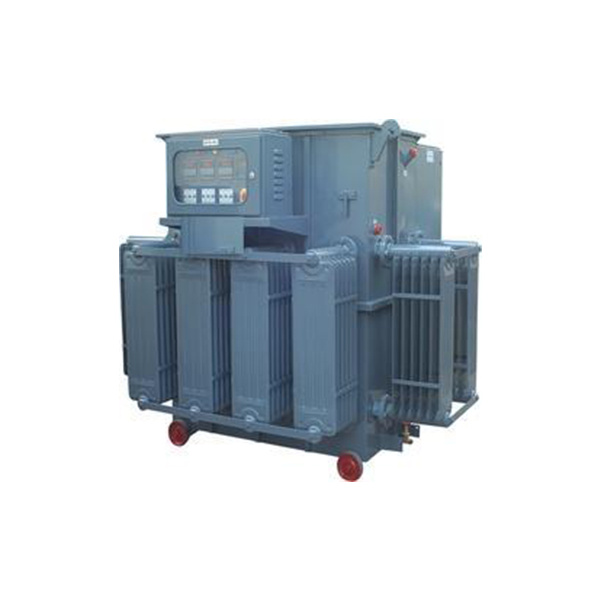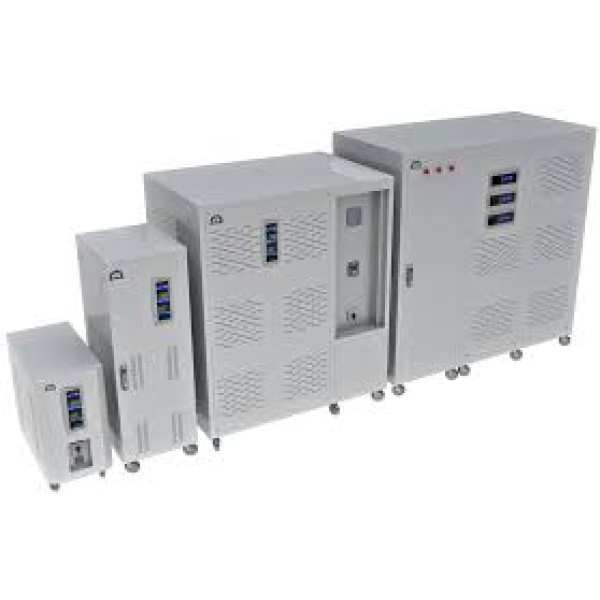Description
Servo Voltage Stabilizers (SVS) are automatic voltage regulation devices used to maintain a stable output voltage by continuously monitoring and adjusting the input voltage levels. They are commonly employed in industrial, commercial, and residential settings to protect electrical equipment and machinery from damage caused by voltage fluctuations. Here’s an overview of servo voltage stabilizers, including their features, benefits, and applications:
Features:
- Automatic Voltage Regulation: Servo voltage stabilizers offer automatic voltage regulation, continuously adjusting the output voltage to maintain stability.
- Wide Input Voltage Range: They can operate within a wide input voltage range, providing voltage regulation even in areas with severe voltage fluctuations.
- High Accuracy: Servo voltage stabilizers provide precise voltage regulation, typically within a tight tolerance range, ensuring that the output voltage remains constant and within acceptable limits.
- Fast Response Time: They offer rapid response times, quickly correcting voltage fluctuations and ensuring uninterrupted power supply to connected equipment.
- Customizable Voltage Range: Some servo voltage stabilizers allow users to customize the desired output voltage range to meet specific requirements.
- Overload Protection: Many servo voltage stabilizers include built-in overload protection features to safeguard connected equipment from electrical faults.
- Digital Control: Advanced servo voltage stabilizers may feature digital control systems for precise voltage regulation, advanced monitoring, diagnostics, and remote control capabilities.
Benefits:
- Equipment Protection: Servo voltage stabilizers protect sensitive electrical equipment and machinery from damage caused by voltage fluctuations, extending their lifespan and reducing maintenance costs.
- Improved Equipment Performance: By maintaining a stable output voltage, servo voltage stabilizers optimize the performance and reliability of electrical and electronic equipment, reducing the risk of malfunctions and downtime.
- Energy Efficiency: They help improve energy efficiency by optimizing voltage levels and reducing energy waste, ultimately leading to lower electricity consumption and operating costs.
- Reduced Maintenance Costs: With their automatic voltage regulation and overload protection features, servo voltage stabilizers require minimal maintenance, leading to lower long-term ownership costs.
Applications:
- Industrial Facilities: Servo voltage stabilizers are commonly used in industrial plants, manufacturing facilities, and process industries to regulate voltage supply to critical machinery, production lines, and control systems.
- Commercial Buildings: They are installed in commercial establishments such as data centers, hospitals, telecommunications facilities, and shopping malls to protect sensitive equipment and ensure uninterrupted operation.
- Residential Buildings: Servo voltage stabilizers can also be used in residential buildings to protect household appliances, electronic devices, and other equipment from voltage fluctuations.
- Utilities and Infrastructure: They play a crucial role in utility substations, power plants, and infrastructure projects to stabilize voltage supply, improve grid stability, and protect electrical infrastructure.
Overall, servo voltage stabilizers offer reliable and precise voltage regulation, helping to maintain a stable and consistent electrical supply in various applications, from industrial and commercial settings to residential buildings and infrastructure projects.





